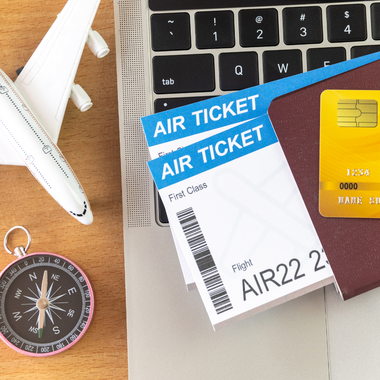
- Three minutes read
Choosing the right card acquirer: top tips for travel merchants
Working with the right card acquirer can help travel merchants’ liquidity. Here’s how they can pick the right acquirer for them.
Credit cards are the lifeblood of the travel industry, with consumers relying on them more than any other payment method – according to a recent report, they remain the most-used payment method for long-haul flight tickets and holidays.
But there is an underlying challenge for travel merchants accepting credit card payments, namely in the relationships between merchants and card acquirers – the financial institutions settling and processing card payments.
Each depends on the other, but the relationship is complicated. Acquirers must refund cardholders if the travel company goes under before the travel service is delivered, and so they demand security. Unfortunately for travel merchants – and the sector in general – large percentages of cash reserves are held by card acquirers for long periods of time, impacting liquidity.
Many acquirers understand that locking away a travel company’s cash can inflict serious damage on the industry, so are taking steps to address this issue. But how can travel companies identify the right acquirer to work with, and ensure their cash flow remains healthy?
Technology helping acquirers and travel merchants work together
The good news for travel merchants and acquirers alike is that emerging technology can allow them to work better together. With new paytech solutions and financial structures, acquirers can afford to be more supportive, without overexposing themselves.
Payment solution providers, for example, can offer advanced business intelligence tools, which establish exactly when funds should be released back to a merchant, so acquirers don’t need to hold them longer than necessary.
Certain providers, like Paysafe, have extensive experience in the travel industry – allowing them to help acquirers read risks more accurately. As a result, acquirers can demand less security and release money faster.
By demanding smaller funds up front that can also be released back to the merchant sooner, merchants’ balance sheets can be far healthier. In fact, in certain cases, collateral may not be required from the merchant at all. These tools can drastically reduce acquirers’ impact on travel merchants’ liquidity.
But how can they identify the acquirers willing to take the steps needed to make this positive change?
Finding the right card acquirer
For travel merchants seeking an acquirer willing to take positive steps to addressing these issues, it’s vital to establish whether they offer the new tools and financial structures to improve liquidity.
This should include:
- Smart data tools. Only acquirers with top-quality fulfilment gap monitoring can reduce how much security they demand from merchants.
- Safeguarding. A trust-based process for holding agency funds, with scheduled release back to the merchant. Safeguarding shortens the period that funds sit outside the merchant’s bank account.
- Multiple acquirer strategy. This establishes whether an acquirer would collaborate with other acquirers to reduce risk and improve terms for the merchant. This is essential to ensuring merchants get the best arrangement possible.
In addition, travel companies should ask acquirers how they intend to innovate in the years to come. For example, introducing blockchain to track secondary exposure could be hugely beneficial to a travel merchant’s cash flow.
Building a better relationship between travel merchants and acquirers
While embracing cutting-edge tools is important for merchants seeking a smoother relationship with acquirers, it’s also essential that old-fashioned relationship building remains a focus.
Any potential acquirer should be committed to engaging with and learning about a merchants’ business. They must be willing to put in the hours to understand the merchants’ priorities and how well they execute against them. With this level of insight, a new acquirer can become confident enough to offer better terms. This may mean releasing security earlier, or maybe removing the need for it entirely.
With the right relationship in place, and the tools to back it up, card acquirers and travel merchants can work towards a brighter future, improving liquidity to see the industry flourish.
To learn more about how data and new collateral options can cut travel merchants’ funds held by card acquirers, download our Travelling Light whitepaper.




